Just hearing the name Bali brings to mind a paradise. It’s not just a destination — it’s a feeling, a dream, a tropical frame of mind.
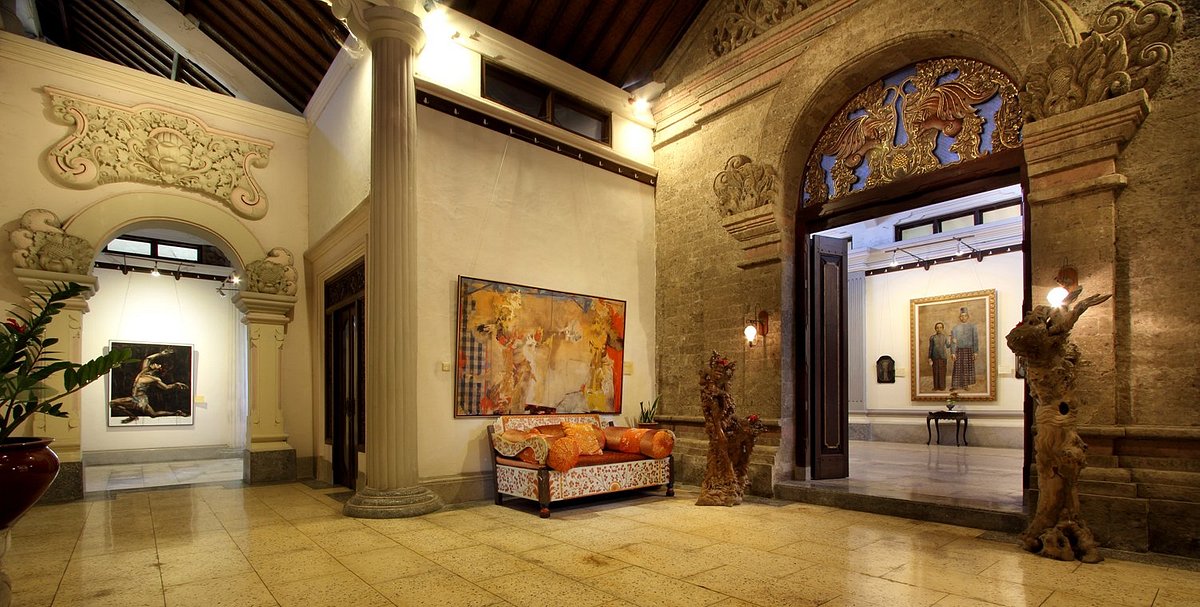
If you only have time for one museum in Ubud, make it the Agung Rai Museum of Art (ARMA). Established by Agung Rai—who made his name and fortune in the 1970s selling Balinese art to international collectors—ARMA houses one of Indonesia’s most impressive private art collections. Opened in 1996, the museum features two purpose-built gallery spaces that showcase Rai’s lifelong passion for Balinese and Indonesian art. Notable pieces include the stunning 19th-century Portrait of a Javanese Nobleman and his Wife by Raden Saleh (1807–80).
The collection spans classical Kamasan and Batuan-style works from the 1930s and ’40s and includes pieces by prominent artists like I Gusti Nyoman Lempad (1862–1978), Ida Bagus Made (1915–1999), Anak Agung Gede Sobrat (1912–1992), and I Gusti Made Deblog (1906–1986). In the modern art gallery, look for Green Rice Paddies (1987) by Nasjah Djamin and Wild Orchids (1988) by Widaya. Over in the traditional gallery, highlights include The Dance Drama Arja (1945) by I Ketut Kasta, Cremation Ceremony (1994) by I Ketut Sepi, and the intricate Wali ‘Ekadesa Rudra’ (2015) by I Wayan Mardiana. The museum also houses works by expat artist Walter Spies (1895–1942), who was instrumental in shaping the Ubud art movement.
A visit to ARMA is even more enriching when local children are rehearsing Balinese dance or gamelan music. The museum also hosts regular cultural performances and offers various courses.
You can enter the museum via Kafe Arma on Jl Raya Pengosekan or through the ARMA Resort entrance. Admission includes a complimentary drink at the café.

Located 18km southeast of Singaraja, the breathtaking Sekumpul Waterfalls cascade up to 80 meters through a lush bamboo-covered valley. These six or seven separate falls are fed by cool upland streams and are considered among Bali’s most stunning natural sights. Reaching them involves a scenic, uphill 45-minute walk (about 1km) through Sekumpul village, where the path is lined with clove, cacao, jackfruit, and mangosteen trees before giving way to steep stairs and winding valley trails connecting the various falls. It’s the perfect place to lose track of time amidst nature’s beauty.
Due to its remote location, hiring a driver is highly recommended. Bayu Sunrise is a trusted option that not only provides island-wide transport but also guides you through the village and on the hike.
From the car park, head left and walk up the road—around 10 minutes—to reach the official waterfall entrance. Watch out for unofficial “Registration Station” signs along the way; they’re not affiliated with the site and may try to charge unnecessary fees. When you reach the sign reading “Sekumpul Waterfall,” turn left onto a brick road passing village homes and shops until you reach the official ticket hut. After paying the entrance fee, follow the trail to a steep hill with stairs leading down to a stream you’ll need to cross—so expect to get your feet wet. Just beyond lies the stunning reward: Sekumpul’s majestic waterfalls.
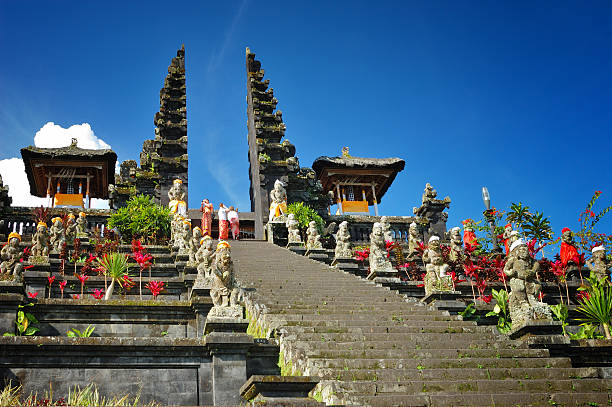
Perched nearly 1000 metres up the slopes of Mount Agung, Pura Besakih is Bali’s most sacred and significant Hindu temple complex. Known as the “Mother Temple” of Bali, it consists of 23 interconnected temples, with the largest and most prominent being Pura Penataran Agung. This temple, spread across six terraced levels, features an iconic candi bentar (split gateway). While visitors can admire its grandeur from the outside, access to the inner sanctum is restricted to worshippers.
The temple’s origins are shrouded in mystery but are believed to date back over 2,000 years. The ancient stone foundations of Pura Penataran Agung and several other shrines bear striking resemblance to megalithic stepped pyramids. It became a site of Hindu worship as early as 1284, when Javanese settlers arrived in Bali, and by the 15th century, it had risen to prominence as the state temple under the Gelgel dynasty.
Despite its spiritual importance and regular ceremonies, recent volcanic activity at Mount Agung has significantly reduced the number of worshippers and tourists.
When visiting, you’ll first come to Parkir Bawa—the main and mandatory parking area for tourists arriving from the south. A ticket office is located nearby, where entrance fees include sarong and sash rental, which are required for all visitors. However, many choose to bring their own traditional attire. A second parking area, Parking Atas, exists but is not accessible for tourists.
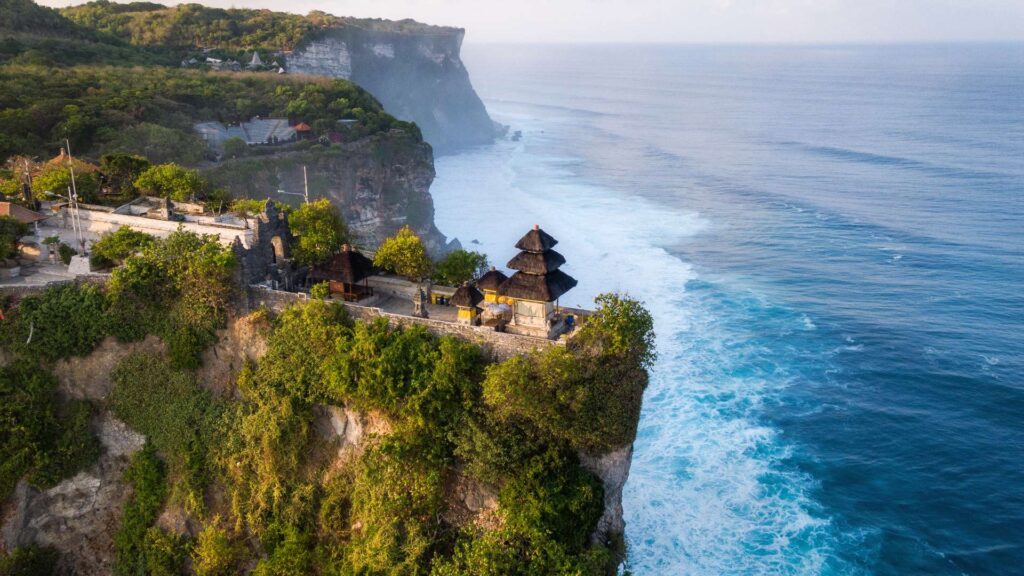
Dramatically perched on the southwestern tip of Bali’s Bukit Peninsula, Uluwatu Temple sits atop towering cliffs that plunge into the crashing Indian Ocean below. Visitors enter through a distinctive arched gateway guarded by statues of Ganesha, leading to temple walls made of coral stone, intricately carved with scenes from Balinese mythology. Keep an eye out for the mischievous monkeys that roam the grounds—they’re notorious for snatching sunglasses, hats, and anything shiny.
While the inner sanctuary, perched at the cliff’s edge, is reserved for Hindu worshippers only, the panoramic views of the ocean and crashing waves are breathtaking, especially at sunset. A traditional Kecak dance performance is held daily in the temple courtyard around sunset—arriving by 5pm is recommended to secure a good seat.
Uluwatu is one of Bali’s key sea temples, established in the 11th century by the Javanese priest Empu Kuturan and later expanded by the revered priest Nirartha, who also founded other iconic coastal temples like Tanah Lot. Uluwatu is believed to be where Nirartha spent his final days and achieved moksa, or spiritual liberation.
For a quieter moment and sweeping views, take a walk along the southern clifftop trail as the sun sets.
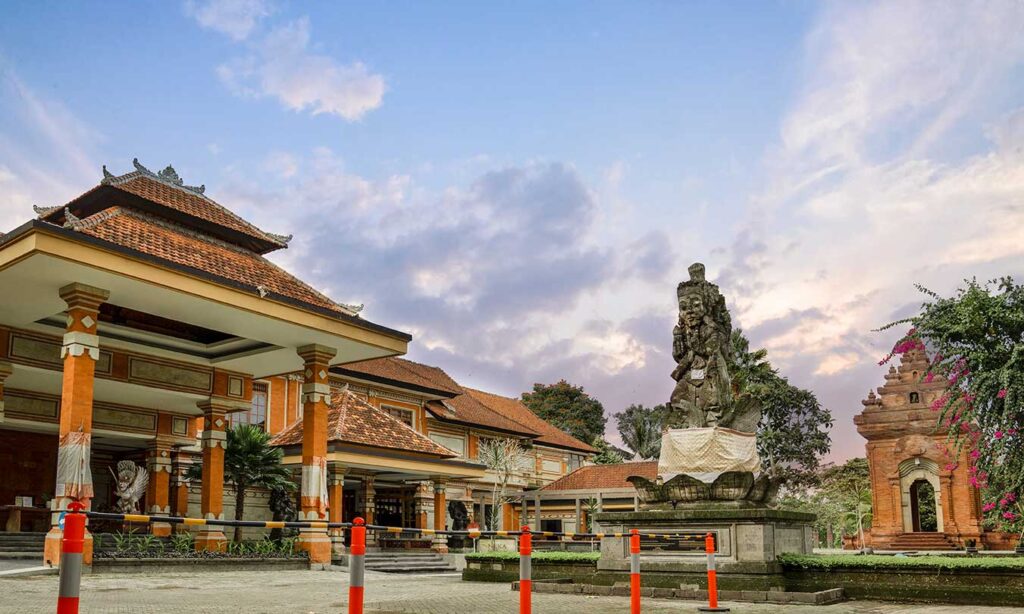
Providing a rich introduction to Balinese art, the Neka Art Museum houses an exceptional collection displayed across thoughtfully curated pavilions and halls. A highlight is the multi-room Balinese Painting Hall, where visitors can explore the evolution of traditional wayang (puppet) painting, alongside the Ubud and Batuan styles influenced by European artists in the 1920s and ’30s.
Don’t miss the Lempad Pavilion, featuring works by renowned Balinese artist I Gusti Nyoman Lempad (1862–1978), or the East-West Art Annexe, which presents striking pieces by Indonesian masters Affandi (1907–1990) and Widayat (1919–2002). The museum also boasts a well-stocked bookstore and a gift shop offering high-quality local handicrafts.
Founded by private collector and Balinese art dealer Suteja Neka, the museum’s vast collection spans both local and international talent. Notable foreign artists who lived and worked in Bali are also featured, including Arie Smit, Rudolf Bonnet, Theo Meier, Louise Garrett Koke, and Tay Moh-Leong.
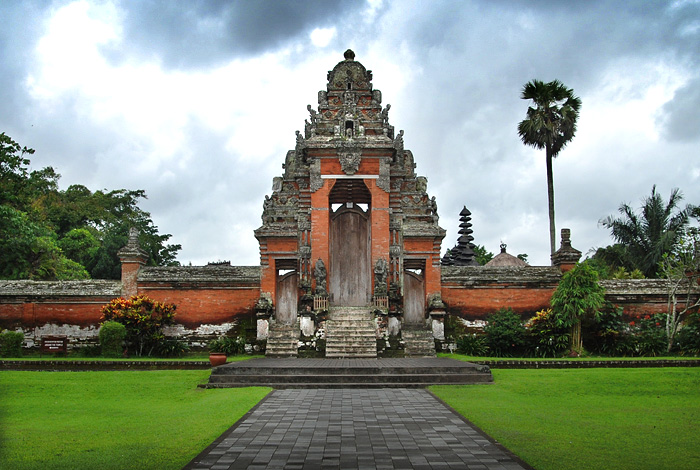
Don’t miss one of Bali’s most serene and impressive temples—Pura Taman Ayun. Encircled by a wide, tranquil moat, this grand royal water temple was once the spiritual heart of the Mengwi kingdom, which thrived until its fall in 1891. Originally built in 1634 and restored in 1937, the temple exudes a sense of calm and spaciousness, making it an ideal spot to explore without the crowds.
The temple grounds are divided into beautifully manicured courtyards. The outer courtyard features an open grassy area, while the inner courtyard is dotted with elegant meru—multi-tiered shrines that rise toward the sky. Pools filled with blooming lotus flowers add to the temple’s peaceful atmosphere.
As part of Bali’s UNESCO-recognized subak system—a traditional water management network that supports rice cultivation—Pura Taman Ayun carries deep cultural and agricultural significance. After your visit, head to the market just east of the temple, where you’ll find cozy warungs serving up simple local lunches.
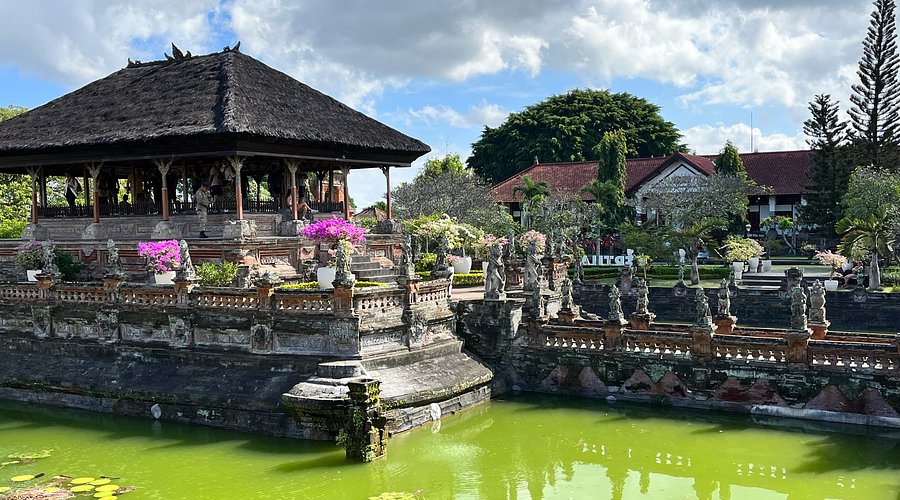
Established in 1710 when the Dewa Agung dynasty relocated here, this palace compound was originally designed as a grand square in the form of a mandala, complete with courtyards, gardens, pavilions, and moats. Much of the palace was tragically destroyed during the Dutch military assault in 1908. Today, only a few remnants of the original complex remain—most notably the intricately carved Pemedal Agung (southern gate), the Kertha Gosa hall of justice, and the Bale Kambang floating pavilion.
Tickets can be purchased across the street on Jl Untung Surapati, next to the Puputan Monument.
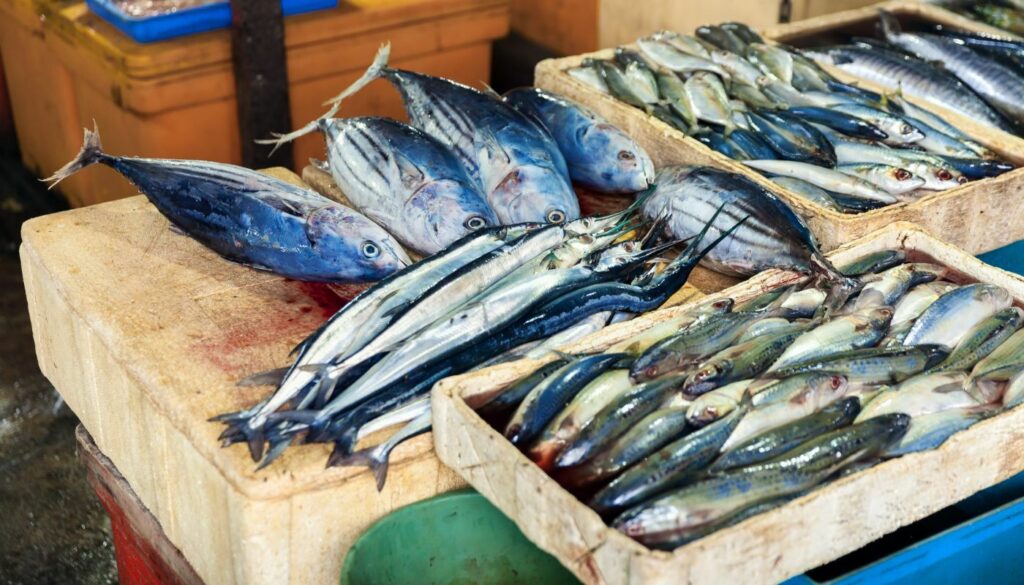
A favourite morning stop on a Bukit Peninsula tour, this bustling fish market is a feast for the senses—lively, pungent, and packed with energy. Vibrantly painted boats line the shore as vendors call out prices for everything from tiny sardines to massive langoustines. The scene is chaotic but captivating. You can buy your seafood here and have it grilled fresh at a nearby warung, or for the best deals, head straight to the boats between 6am and 7am to purchase your catch right off the water.
WhatsApp us